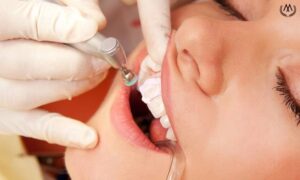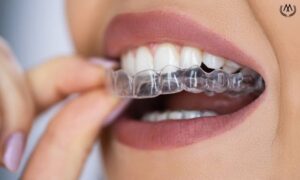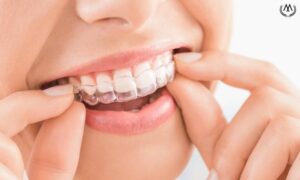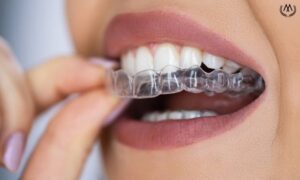Orthodontic treatment can have a significant impact on various aspects of oral health, including alignment, bite, and overall dental function. A common question that arises is whether orthodontic treatments, such as MK Aligners, can influence migraines or headaches. Here’s an exploration of how orthodontic treatment may affect headaches:
1. Understanding Migraines and Headaches
Migraines are a type of headache characterized by severe pain, often accompanied by nausea, sensitivity to light, and visual disturbances. Tension headaches, another common type, are generally caused by muscle tension in the neck and shoulders.
2. Orthodontic Treatment and Its Potential Effects
MK Aligners are a popular orthodontic treatment that involves wearing a series of clear, removable aligners to gradually straighten teeth. While the primary goal of MK Aligners is to correct misalignment and improve dental aesthetics, it’s important to understand their potential impact on headaches:
1. Bite Correction
Method: Orthodontic treatments often address issues related to bite misalignment, such as overbites, underbites, and crossbites.
Impact on Migraines: Properly aligning the bite can alleviate undue stress on the jaw joints and muscles, which may reduce the frequency or intensity of tension headaches. A well-aligned bite can also contribute to improved overall dental function.
2. Jaw and Muscle Tension
Method: Misalignment of teeth and jaw can lead to muscle tension and strain, which might contribute to headaches.
Impact on Migraines: By correcting misalignment and improving the bite with MK Aligners, it is possible to relieve muscle tension in the jaw. This reduction in strain can potentially lessen the severity of headaches related to muscle tension.
3. Temporomandibular Joint (TMJ) Disorder
Method: Orthodontic treatment can address issues related to the temporomandibular joint, which connects the jawbone to the skull.
Impact on Migraines: TMJ disorders can be a source of headaches or migraines. By improving the alignment of the teeth and jaw, MK Aligners may help alleviate TMJ-related pain and reduce associated headaches.
3. Consulting with Healthcare Professionals
Method: It’s essential to work with both your orthodontist and healthcare provider if you experience migraines or persistent headaches.
Impact on Migraines: Inform your orthodontist about any headaches or migraines you experience. They can evaluate whether the orthodontic treatment might be contributing to or alleviating your symptoms. Additionally, consulting a healthcare provider can help determine if there are underlying conditions contributing to your headaches.
4. Managing Headaches During Orthodontic Treatment
Method: During the initial stages of orthodontic treatment, some individuals might experience discomfort or headaches as their teeth begin to move.
Impact on Migraines: This discomfort is usually temporary and should subside as your teeth adjust to the new aligners. Over-the-counter pain relief and applying a cold compress to your forehead or neck can help manage these symptoms.
5. Long-Term Effects
Method: The long-term benefits of orthodontic treatment on headache frequency and intensity depend on individual cases.
Impact on Migraines: Many patients report an improvement in headache symptoms after their orthodontic treatment is completed, particularly if their headaches were related to bite misalignment or TMJ issues.
Conclusion
Orthodontic treatments, such as MK Aligners, can potentially impact headache frequency and severity by addressing bite misalignment, reducing muscle tension, and alleviating TMJ disorders. However, the effects vary from person to person. It is crucial to communicate with your orthodontist and healthcare provider to monitor and manage any headache symptoms during your treatment. If headaches persist or worsen, a comprehensive evaluation by both your orthodontist and a medical professional is recommended to address any underlying issues.





